In Transit AZ2CO
I’m sure you can read that “code” – Arizona to Colorado. On the way, of course we had to stop at Four Corners.
Leaving the forest, we twisted down the steep, serpentine section of AZ89A, and emerged alongside the Vermillion Cliffs. Here, the road stretches seemingly endlessly to the horizon while some of the most impressive scenery in the West parades by our side windows.
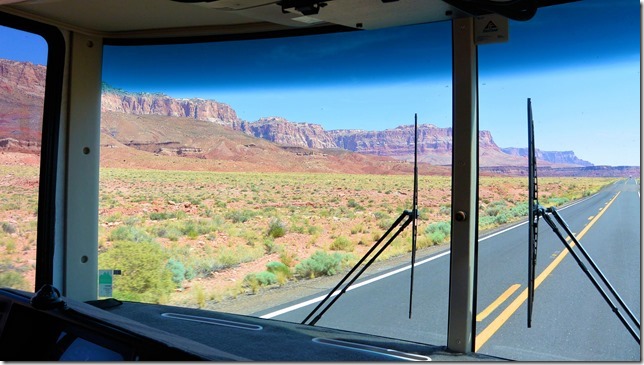
Further south, we descend down to 3500 feet and cross the Colorado River.
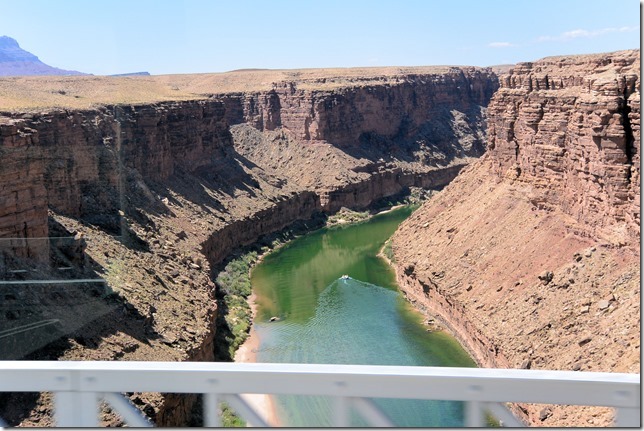
As we turn east on AZ160, a first sight is one of the ubiquitous Navajo souvenir stands. Fortunately, this is not the only scenery available, and this section of highway turned out to be quite a treat. In fact, AZ160 is qualified (as far as we are concerned) to be on the scenic-byway list.
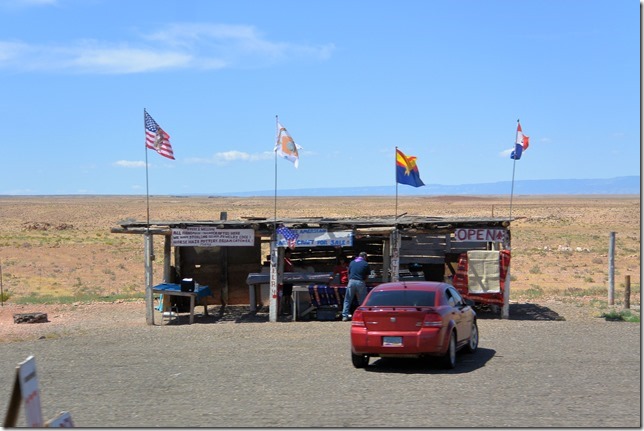
Large formations march with us along the highway – – –
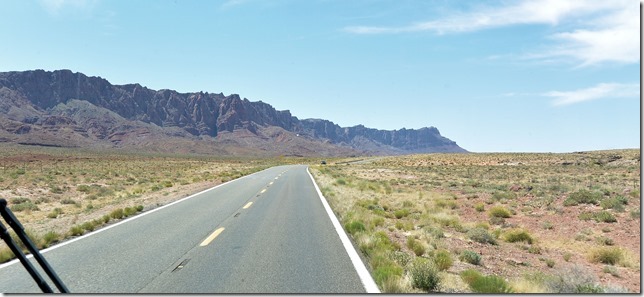
And smaller ones crop up here and there to add spice.
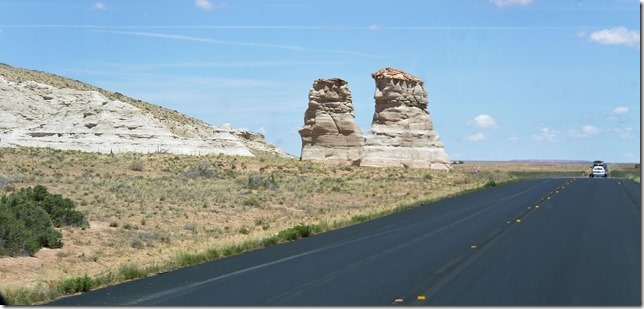
Approaching Kayenta, we find the evidence of the massive Peabody mine there (see http://en.wikipedia.org/wiki/Kayenta_Mine). The line of what looks like phone poles is actually the power structure for an electric train to move the coal. Prior to the train, it was trucks (lots of diesel), and before that it was a coal-water slurry through the giant green pipeline. This went to a now-defunct Mojave power station. We didn’t try to go see the Kayenta mine – – that will be for another trip.
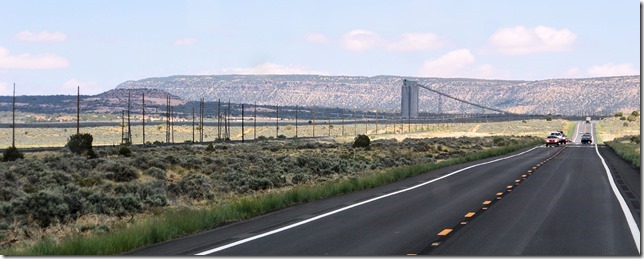
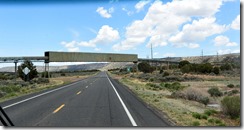
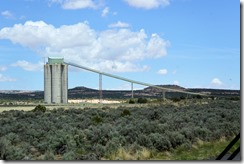
Passing about 20 miles south of Monument Valley, some similar outcroppings show up (this is Church Rock).
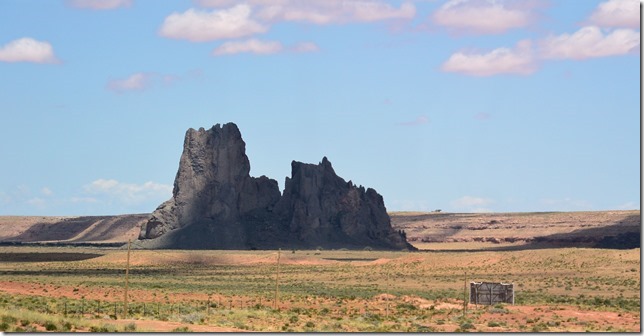
And we always stumble upon a few folks who enjoy traveling the hard way.
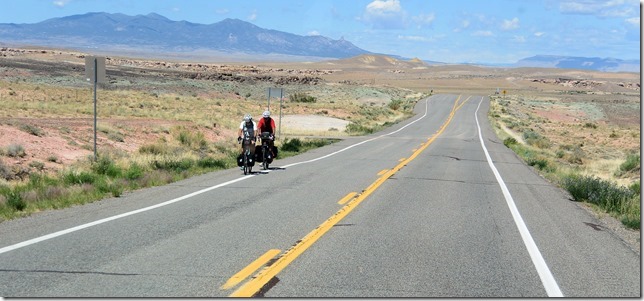
Just a bit short of our final stop for the day, we spend some time at Four Corners – the place where Arizona, Utah, Colorado, and New Mexico state lines cross. There is some really interesting surveyors’ history here, like the fact that the state lines don’t all actually go where they were decreed (by Congress) to go.
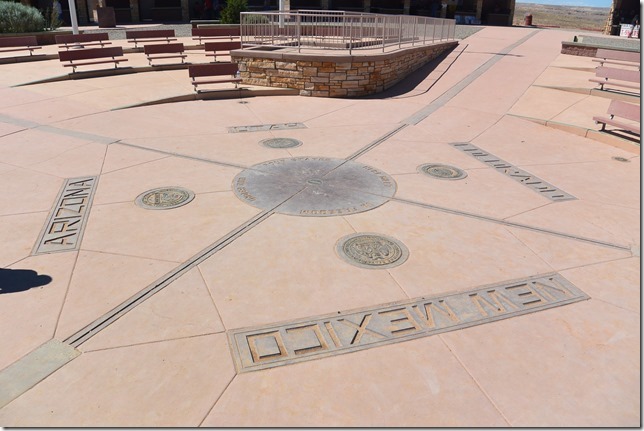
Of course, I have to do the requisite stand-in-all-four photo. My hat covered the intersection quite well.
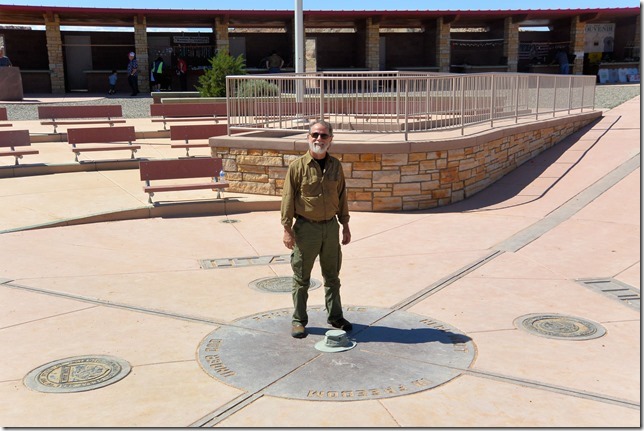
Since the Monument is on Indian land, the architecture is rather unique. The nicely-done structure is composed of the center-piece, with four raised platforms so that people can take snapshots of their loved ones standing in all four states. Surrounding the center-piece are four 14-stall souvenir stands. Yes, the Monument supports 56 opportunities for tourists and natives to get together for a little commerce. I have come to believe that the most predominant element of sustaining Navajo ancestral culture is the production and exchange of trade goods.
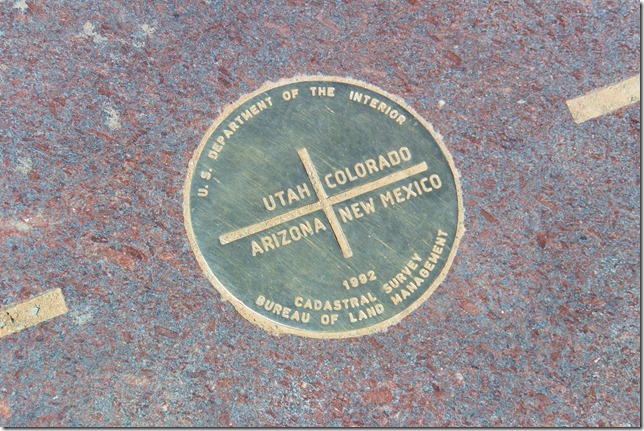
The Monument is very popular (despite some poor online reviews), and the center pieces historically undergo a full replacement about every 30 years.
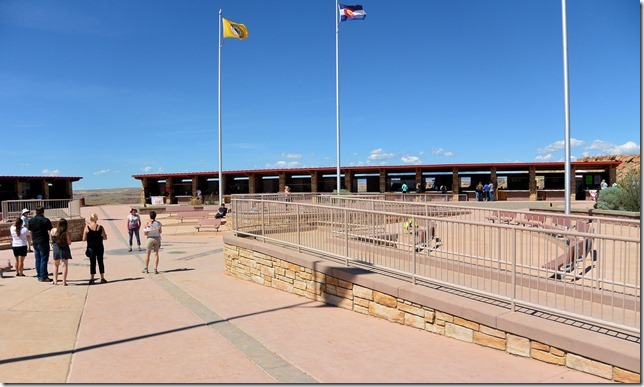
Finally, we arrive at Cortez (lovely little town) and Mesa Verde National Park. To say that we are impressed is a gross understatement. The town, the area, and the Park are well beyond our expectations. Consider that we came here simply because it was in Colorado and National Parks seldom disappoint. Wow, are we going to have fun. Life is good.
Stay tuned, lots more to come – – –
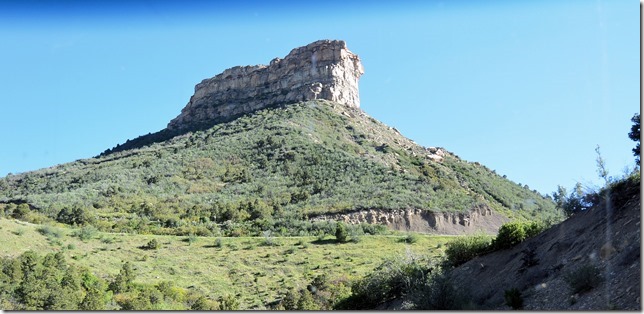

Comments
In Transit AZ2CO — No Comments
HTML tags allowed in your comment: <a href="" title=""> <abbr title=""> <acronym title=""> <b> <blockquote cite=""> <cite> <code> <del datetime=""> <em> <i> <q cite=""> <s> <strike> <strong>